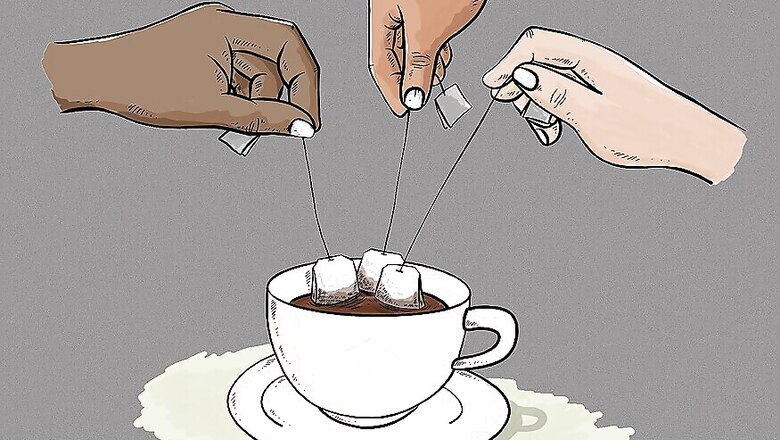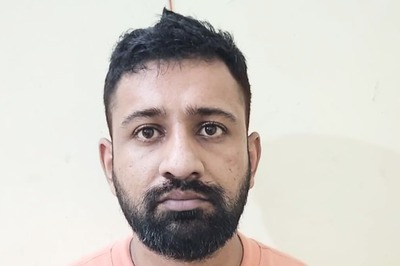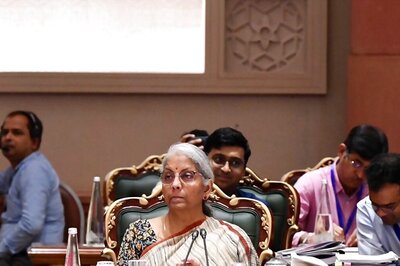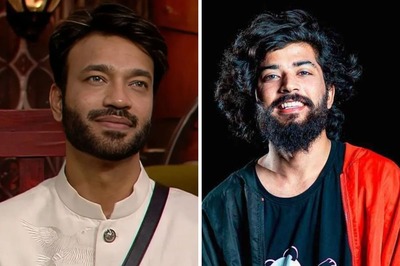
views
Srinagar: Sometime in the month of January 1991, a frail figure wearing an oversized fur-coat, constantly checking his watch, hurriedly walked through a deserted street in Srinagar. It was 6:25 in the morning, thirty-five minutes to the blast that could possibly kill dozens. Only the courier knew where it would go off.
He hastened his pace, zigzagging through the curfewed streets of the city that was under a siege. Every shop, establishment, and building he encountered on his way were shut.
The courier was a local. He had been working with India’s Intelligence Bureau for the last four years and as he walked through the cold mist, he held on tightly to a piece of paper which named the place where the IED was planted and the time it was set to go off. The crumpled piece of paper read: BADAMI BAGH CANTONMENT. 7 AM.
He was earlier told to report at Shiraz Cinema if there was any ‘khabar (information)’. But the presence of the Army, which had occupied the cinema last summer, and a constant vigil by the militants around the area, meant a last minute change in plans. The sleuth he was supposed to meet came up with a different rendezvous point.
“Meet me at Ahdoos. That is the only place that would be open even on a curfew day,” the former Intelligence Bureau officer said in his message.
As the courier reached the hotel in the heart of Srinagar, the officer, who was dressed in civil clothes, welcomed him. The message was instantly relayed through a satellite phone and within the next ten minutes, a bomb disposal squad would reach the spot and diffuse the IED.
For the next six months, Ahdoos hotel would remain the place where the former IB officer would often meet his courier and receive the information. Then things began to change. The crowds began to swell at the only working hotel in Srinagar, and they were no regular guests.
“The word had spread that Ahdoos is the place to do business,” reminisced the officer, who wished to remain anonymous. The ‘business’ he referred to, in IB’s parlance, had no single definition.
When militancy broke out in Jammu and Kashmir, many hoteliers ended up winding their business and vacating the buildings. Most of the hotels were even occupied by the armed forces. The only remaining hotel that entertained any guests was Ahdoos, located at Residency Road in Srinagar.
Painted in ceramic white, the most remarkable thing about Ahdoos wasn’t its appearance or the scrumptious Kebabs it was known for. It was the only hotel – given the adversity the city had faced in recent years – which enjoyed a new line of guests.
The hotel now had started to attract a hoard of diplomats, foreign journalists, intelligence agents, informers, politicians, and separatists – all looking to play their part in the conflict that was raging in the region. This was the place to be.
As Ahdoos is about to celebrate its Centennial, guests walk by, seemingly oblivious to the hotels’ past — a microcosm of how murky the Kashmir conflict was.
Today, the hotel has become a part of the bustling city, which is now happily a vacation spot. A stark contrast to the city under siege in the 90s. Visitors are no longer confined to the likes of war correspondents and diplomats.
In the 90s, Ahdoos was the place where journalists covering the conflict congregated to swap stories, describe what they’ve seen, hear briefings from Army generals and militant leaders alike – and, of course, write and file their copies.
As the city witnessed daily killings and fierce gun battles, Ahdoos kept buzzing with journalists. “That’s why,” Jawed Naqvi, the DAWN correspondent for New Delhi, believes, “Ahdoos was a haunt for parachuting journalism.”
Naqvi, like many foreign journalists, had stationed himself in Ahdoos during the early 90s. He kept on sourcing his daily stories from the ground and travelled to different parts of the valley, which had been bruised and battered with the raging guns. Naqvi, like every other journalist, would come back to the hotel and file his stories.
“The hotel corridors remained swarmed with journalists who had their own take on the conflict,” Naqvi remembers.
But why was Ahdoos so frequented by journalists? “It was seen as a safe residence, partly due to where it was situated – tucked between other buildings occupied by the Army. The buildings surrounding the hotel usually took the brunt of militant fire,” Naqvi said.
But the hotel wasn’t all about people who file copies, call contacts and write about a war they were not allowed to witness. This theatre had other actors, too.
Ahdoos had long been frequented by armed guerrillas from Hizbul Mujahideen (HM) and Jammu and Kashmir Liberation Front (JKLF).
“One such militant commander was Javaid Mir,” Naqvi said.
Javaid was among the very first militants from Kashmir. Following the 1987 election, which was widely condemned as being rigged, hundreds of disenchanted Muslim United Front (MUF) workers switched to JKLF and trekked to Pakistan seeking arms, training.
These militants, when they returned back to the valley, armed and trained, needed to amplify their voice to the outside world. Ahdoos, filled with journalists, was the window to that world.
But sneaking into Ahdoos, already under the radar of IB sleuths, wasn’t easy. Yet, there were some who dared to sneak in.
“Javaid was the master of disguise. He used to come and go with ease, and meet journalists,” Naqvi said.
A local journalist, who covered Kashmir during the 90s, remembers when a group of militants from JKLF used to meet journalists every now and then inside the hotel premises.
“We used to get the message from JKLF that they will meet us in Ahdoos. We used to get our stories and they got their message across. It was as simple as that. Both sides were happy,” a journalist said, wishing anonymity.
This, though, didn’t mean that the hotel owners had any part in this. “It (the hotel) was open for all. Anybody would and could come in. Those were the troubled times,” the journalist said.
Ahdoos was also the spot where politicians and separatists held press briefings. It still is.
In 1996, when Al-Barq’s chief Bilal Lodhi, Hizbul divisional commander Imran Rahi, Muslim Mujahideen’s divisional commander Ghulam Moinuddin and Shabir Shah came out for a peace talk with New Delhi – a step that took wings out of militancy back then — the chosen place of the press briefing was Ahdoos.
The event also found a mention in former special director of the Intelligence Bureau and former chief of the Research and Analysis Wing (RAW) AS Dulat’s book — Kashmir: The Vajpayee Years.
Since then, the hotel has witnessed numerous press briefings from leaders who represent both sides of the political spectrum.
Such is the importance of the hotel in the Kashmir narrative that Arundhati Roy’s book ‘The Ministry of Utmost Happiness’ has a journalist character stationed at Ahdoos, clearly drawing parallels from history.
The hotels’ importance was echoed by former J&K chief minister, Omar Abdullah. In a recent tweet, Omar said, “Ahdoo’s Srinagar completes 100 years next month. If its walls could talk the stories it would be able to tell (sic)”.
But for those, who have stayed at Ahdoos, enjoyed its famous hospitality, the amazing cuisine and the generous staff, the place has much more to it than just being a hotel. It’s a witness to war, political scheming and stories that changed the course of history.
Among all the hotel's journalists have stayed in Kashmir, Ahdoos finds a special mention in ‘reporter diaries’ and ‘autobiographies’.
Perhaps, that’s why, Suhasini Haider, the current Diplomatic Editor for The Hindu, in one of her pieces written for the News18, said, “Ahdoos built a legendary reputation, for the best food in town, but also for the people you would meet there — from intelligence officials to local militants.”
Even as Ahdoos enjoys rave reputation, for many, the hotel continues to be an important part of their lives. “It was the ‘Hotel California’. You could check out, but never leave,” a New Delhi-based journalist, who has been a frequent visitor to the hotel since the 90s, quipped.


















Comments
0 comment